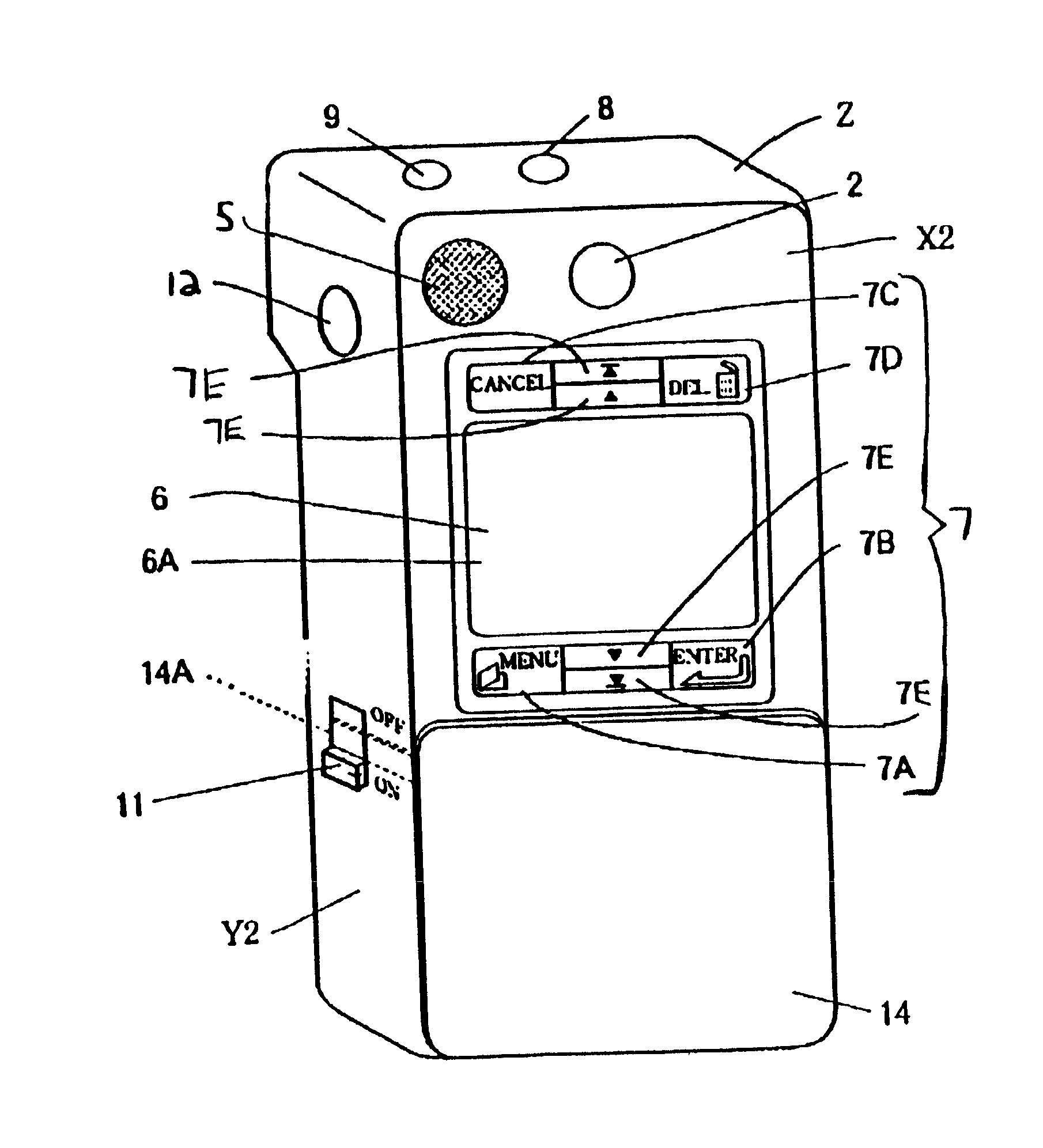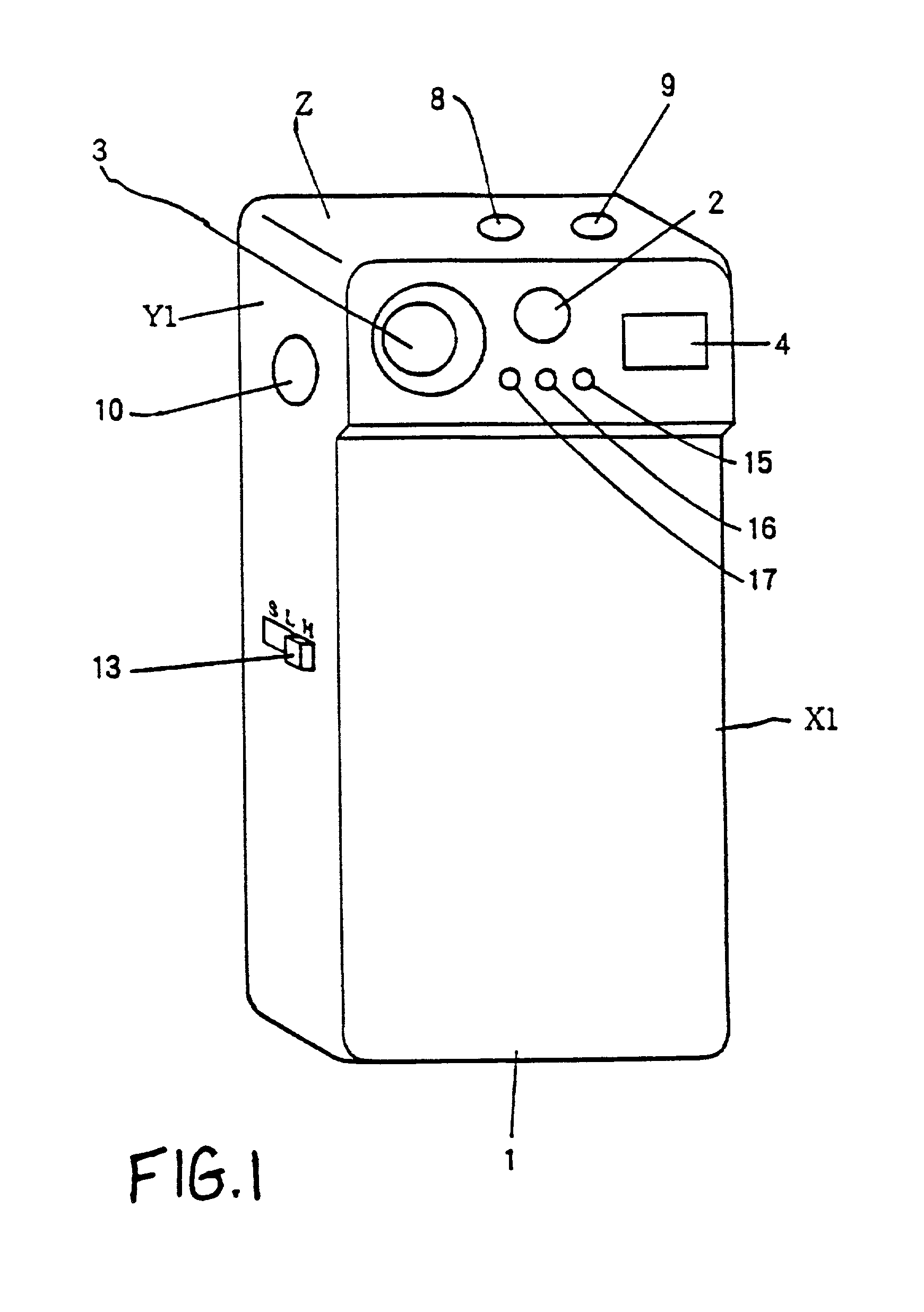Information processing apparatus
a technology of information processing and equipment, applied in the field of information processing equipment, can solve the problems of wasteful memory space and inefficient system, and achieve the effect of efficient display of images of different resolutions
- Summary
- Abstract
- Description
- Claims
- Application Information
AI Technical Summary
Benefits of technology
Problems solved by technology
Method used
Image
Examples
Embodiment Construction
[0048]FIGS. 1 and 2 are perspective drawings showing the structure of one preferred embodiment of the electronic camera in accordance with the present invention. In the electronic camera of the preferred embodiment, when photographing an object, face X1 is oriented toward the object and face X2 is oriented toward the user. A viewfinder 2 is provided on face X1 to confirm the photographic range of the object. A photographic lens 3 that takes in the light image of the object and a flash component (strobe) 4 that flashes light to illuminate the object are also provided on face X1.
[0049]Furthermore, a red-eye reduction (RER) LED 15 is provided on face X1 that reduces red-eye by emitting light before the strobe 4 flashes when performing photography. A photometry device 16 performs photometry when action of the CCD 20 (FIG. 4) is halted and a colorimetry element 17 performs colorimetry when the CCD 20 is halted.
[0050]Meanwhile, viewfinder 2 and speaker 5 that outputs sound corresponding t...
PUM
 Login to View More
Login to View More Abstract
Description
Claims
Application Information
 Login to View More
Login to View More - R&D
- Intellectual Property
- Life Sciences
- Materials
- Tech Scout
- Unparalleled Data Quality
- Higher Quality Content
- 60% Fewer Hallucinations
Browse by: Latest US Patents, China's latest patents, Technical Efficacy Thesaurus, Application Domain, Technology Topic, Popular Technical Reports.
© 2025 PatSnap. All rights reserved.Legal|Privacy policy|Modern Slavery Act Transparency Statement|Sitemap|About US| Contact US: help@patsnap.com



